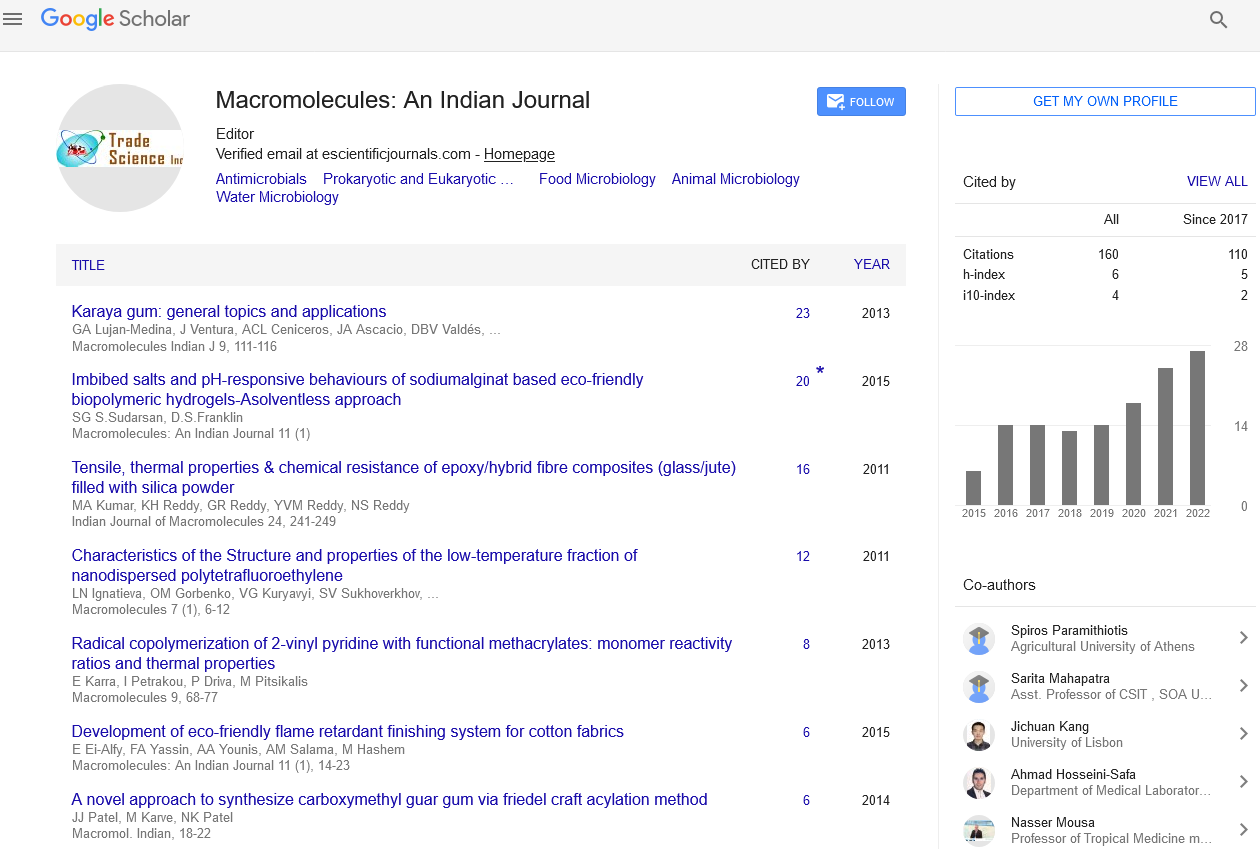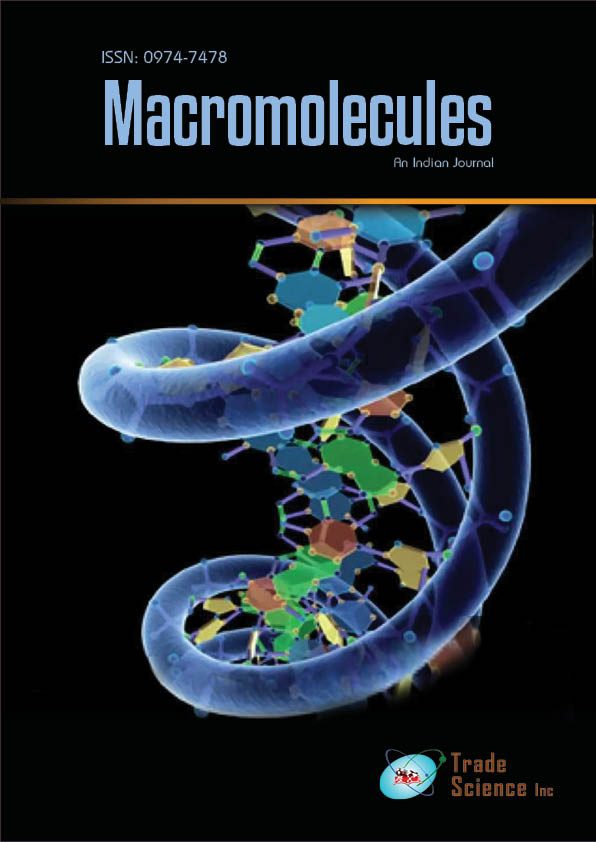Abstract
Synthesis of colloidally stable lattices nano-rubber particles based on natural rubber (cis-1,4-polyisoprene)
Author(s): Usama F.Kandil, Ahmed Hashim, Maher A.El-Sockary, Nevien O.Shaker, Mona A.Abd El-RahmanThe best impact modifiers for coatings and engineering plastics include fixed morphology core-shell particles. For the present work, natural rubber (cis-1,4-polyisoprene) was chosen, for its elasticity, resilience, and toughening effect for most brittle materials and has been used to prepare the core of the desired particles. The solution-emulsification technique was used to produce artificial latices based on natural rubber (cis-1,4-polyisoprene). Conventional emulsification techniques aswell as ‘miniemulsification’methods have been investigated. In both cases, a larger volume of polymer is reduced into tiny rubber balls in the nano scale using an ultrasonic homogenizer. The difference between conventional emulsification and miniemulsification resides in stabilizing the system. For the conventional emulsification method, an equimolar mixture of anionic (Potassium palmitate) and nonionic (polyoxyethylene (100) stearyl ether, Brij 700) surfactants was found to be the optimal surfactant system. For the miniemulsification method, a combination of Potassiumpalmitate as a surfactant and hexadecane or cetyl alcohol as a costabilizer was the most suitable system. Both conventional emulsification and miniemulsification lead to latices with monomodal particle size distributions and volume-average diameters ranging from300 to 400 nm, determined with light scattering techniques.

